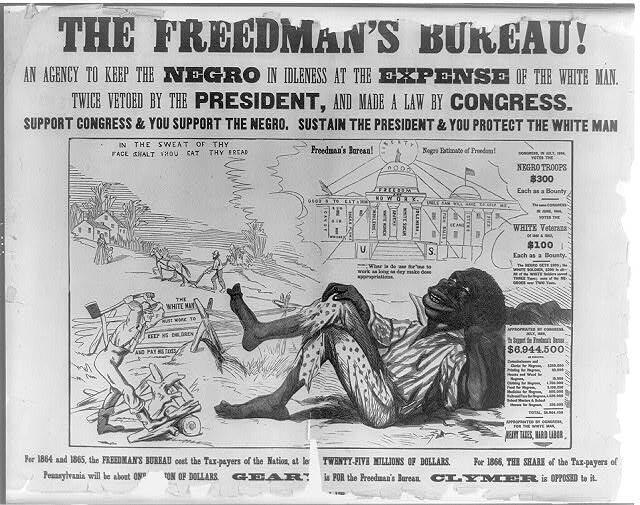This text is part of the Teaching the Movement Text Library and aligns with Summary Objective 1.E.
Click this link to access the text on the Library of Congress website.

Summary provided by the Library of Congress: “One in a series of racist posters attacking Radical Republicans on the issue of black suffrage, issued during the Pennsylvania gubernatorial election of 1866. (See also “The Constitutional Amendment!,” no. 1866-5.) The series advocates the election of Hiester Clymer, who ran for governor on a white-supremacy platform, supporting President Andrew Johnson’s Reconstruction policies. In this poster a black man lounges idly in the foreground as one white man ploughs his field and another chops wood. Accompanying labels are: “In the sweat of thy face shalt thou eat thy bread,” and “The white man must work to keep his children and pay his taxes.” The black man wonders, “Whar is de use for me to work as long as dey make dese appropriations.” Above in a cloud is an image of the “Freedman’s Bureau! Negro Estimate of Freedom!” The bureau is pictured as a large domed building resembling the U.S. Capitol and is inscribed “Freedom and No Work.” Its columns and walls are labeled, “Candy,” “Rum, Gin, Whiskey,” “Sugar Plums,” “Indolence,” “White Women,” “Apathy,” “White Sugar,” “Idleness,” “Fish Balls,” “Clams,” “Stews,” and “Pies.” At right is a table giving figures for the funds appropriated by Congress to support the bureau and information on the inequity of the bounties received by black and white veterans of the Civil War.”
This text is useful to expand on the argument that the civil rights movement could arguably be said to begin after the Civil War as this word freedom is beginning to be defined for African Americans.